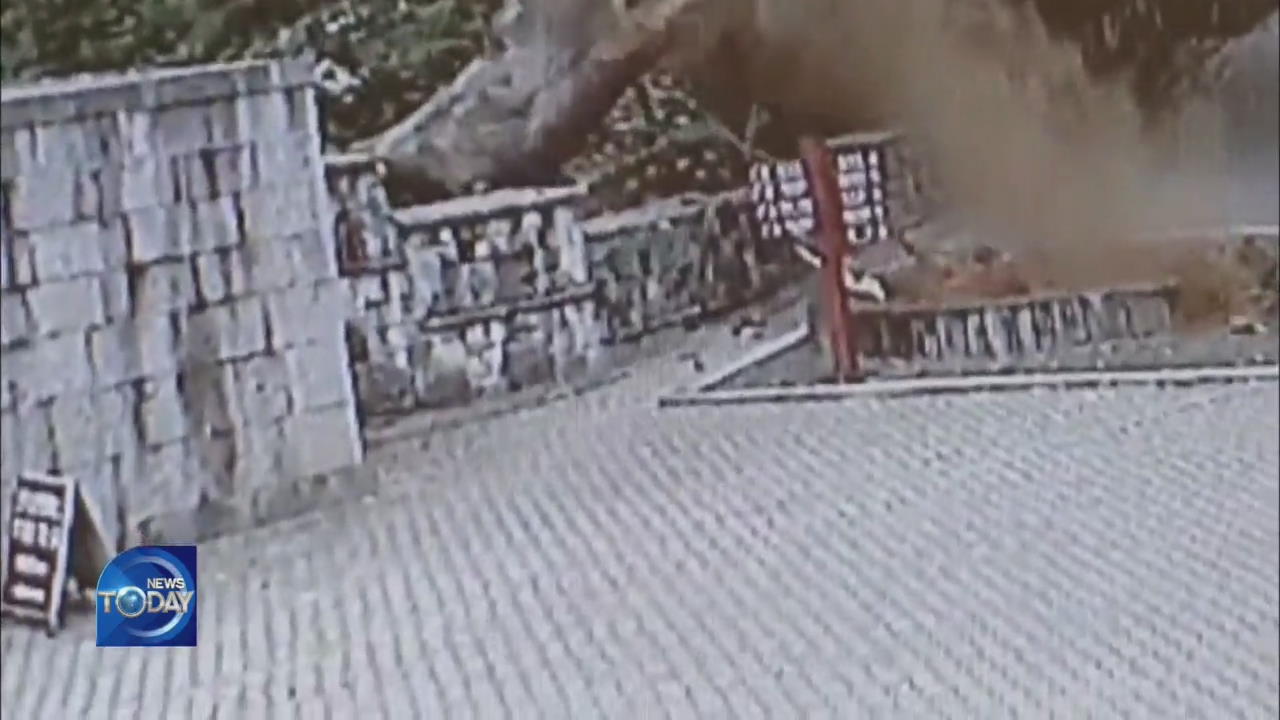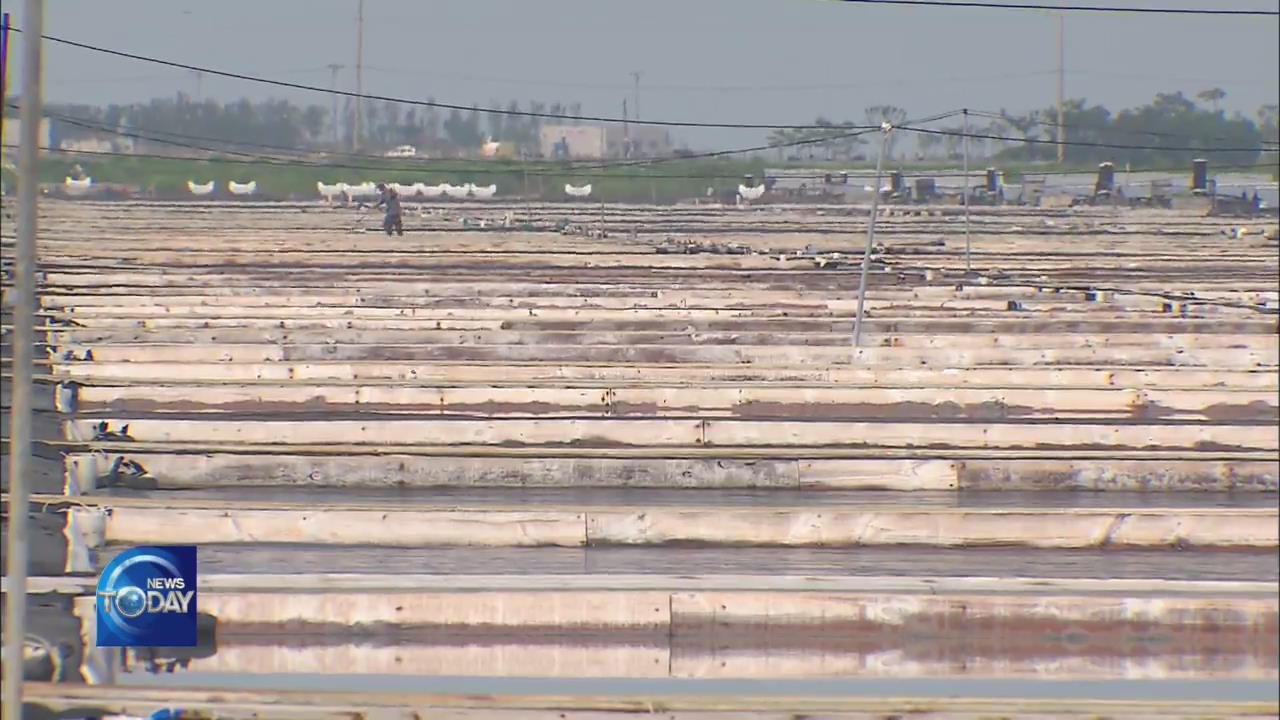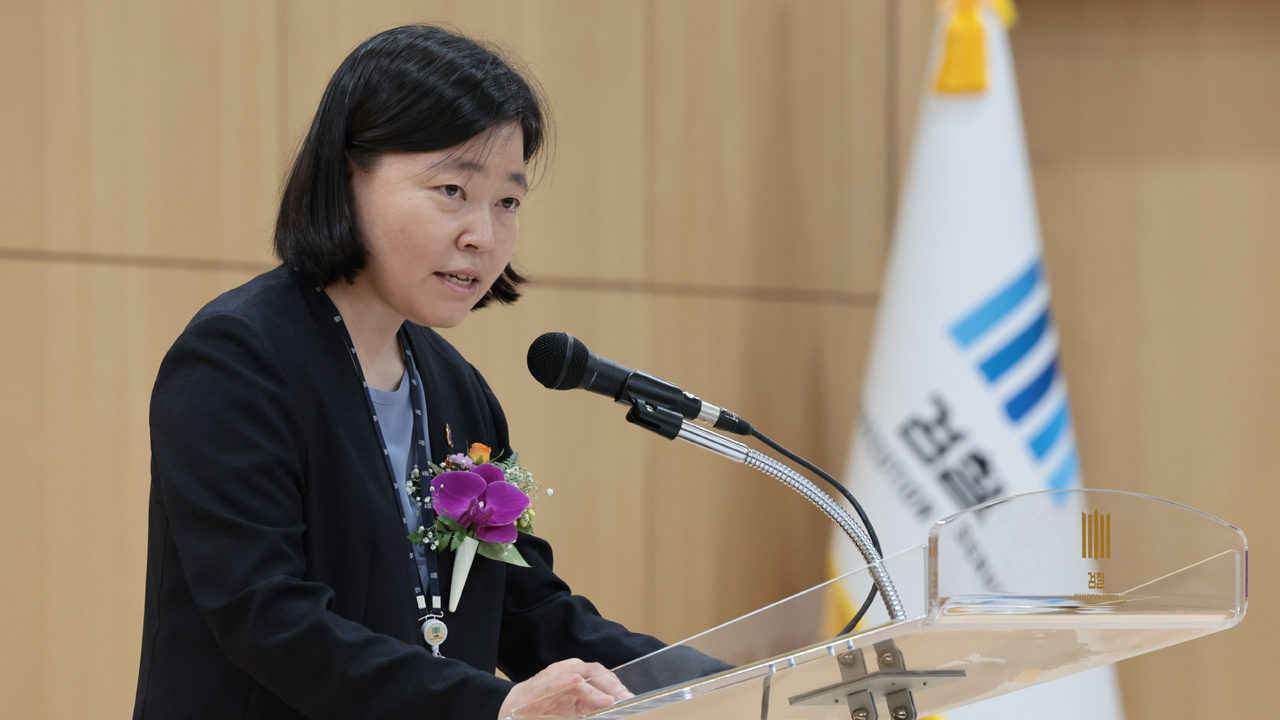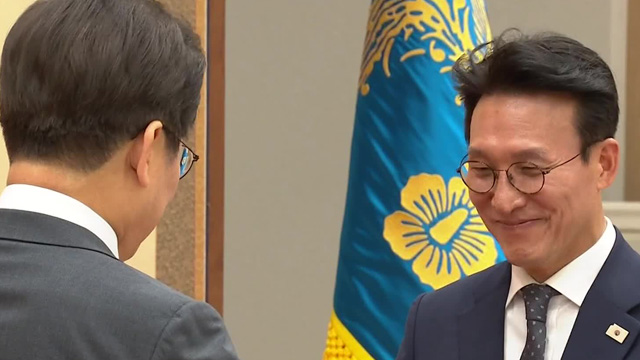SAFETY MEASURES FOR FALLING TREES
입력 2019.07.17 (15:11)
수정 2019.07.17 (16:45)
읽어주기 기능은 크롬기반의
브라우저에서만 사용하실 수 있습니다.
[Anchor Lead]
Last month, a 600-year-old tree collapsed in Jinju Fortress. Fallen trees cause human and property damage every year during typhoons and the monsoon season. Here's a look at the safety measures Korea has in place to prevent such damage.
[Pkg]
A tree leaning against a fortress wall suddenly collapses and falls on a nearby staircase and ticket office. The accident was expected, because the base of this 600-year-old zelkova tree was rotten. However, no safety measures were in place to prevent it. About a month after the accident, the Jinju Fortress management office inspected the trees growing near the fortress. More than 140 trees were found to measure over 50cm in diameter at their bases. However, the inspection only included pruning and logging without determining the number of old trees or installing any safety devices.
[Soundbite] (OFFICIAL FROM JINJU FORTRESS ADMINISTRATIVE OFFICE (VOICE MODIFIED)) : "All we can do is just prune the old trees. We cannot cut them like other trees."
Trees collapsing in stormy weather fall onto roads, cars and houses. Every year, fallen trees cause damage during the monsoon season and typhoons, including hitting and killing pedestrians. On July 9, a bill on the revision of the Forest Administration and Management Act was announced to protect some 13,000 trees in the nation by conducting annual safety checks and strengthening regulations on compensation. However, there are no clear safety regulations for large and old trees that are not subject to protection. They are managed independently by local governments and parks. What's more, there are no statistics on how many trees pose a danger.
[Soundbite] CHOO GAP-CHUL(PROF., GYEONGNAM NATIONAL UNIVERSITY OF SCIENCE AND TECHNOLOGY) : "Old and large trees must be inspected in advance to find out if they are likely to fall soon due to rotten trunks."
Experts are calling on authorities to determine the exact number of old and large trees that are not subject to safety regulations and to strengthen guidelines on their inspection.
Last month, a 600-year-old tree collapsed in Jinju Fortress. Fallen trees cause human and property damage every year during typhoons and the monsoon season. Here's a look at the safety measures Korea has in place to prevent such damage.
[Pkg]
A tree leaning against a fortress wall suddenly collapses and falls on a nearby staircase and ticket office. The accident was expected, because the base of this 600-year-old zelkova tree was rotten. However, no safety measures were in place to prevent it. About a month after the accident, the Jinju Fortress management office inspected the trees growing near the fortress. More than 140 trees were found to measure over 50cm in diameter at their bases. However, the inspection only included pruning and logging without determining the number of old trees or installing any safety devices.
[Soundbite] (OFFICIAL FROM JINJU FORTRESS ADMINISTRATIVE OFFICE (VOICE MODIFIED)) : "All we can do is just prune the old trees. We cannot cut them like other trees."
Trees collapsing in stormy weather fall onto roads, cars and houses. Every year, fallen trees cause damage during the monsoon season and typhoons, including hitting and killing pedestrians. On July 9, a bill on the revision of the Forest Administration and Management Act was announced to protect some 13,000 trees in the nation by conducting annual safety checks and strengthening regulations on compensation. However, there are no clear safety regulations for large and old trees that are not subject to protection. They are managed independently by local governments and parks. What's more, there are no statistics on how many trees pose a danger.
[Soundbite] CHOO GAP-CHUL(PROF., GYEONGNAM NATIONAL UNIVERSITY OF SCIENCE AND TECHNOLOGY) : "Old and large trees must be inspected in advance to find out if they are likely to fall soon due to rotten trunks."
Experts are calling on authorities to determine the exact number of old and large trees that are not subject to safety regulations and to strengthen guidelines on their inspection.
■ 제보하기
▷ 카카오톡 : 'KBS제보' 검색, 채널 추가
▷ 전화 : 02-781-1234, 4444
▷ 이메일 : kbs1234@kbs.co.kr
▷ 유튜브, 네이버, 카카오에서도 KBS뉴스를 구독해주세요!
- SAFETY MEASURES FOR FALLING TREES
-
- 입력 2019-07-17 15:42:50
- 수정2019-07-17 16:45:30

[Anchor Lead]
Last month, a 600-year-old tree collapsed in Jinju Fortress. Fallen trees cause human and property damage every year during typhoons and the monsoon season. Here's a look at the safety measures Korea has in place to prevent such damage.
[Pkg]
A tree leaning against a fortress wall suddenly collapses and falls on a nearby staircase and ticket office. The accident was expected, because the base of this 600-year-old zelkova tree was rotten. However, no safety measures were in place to prevent it. About a month after the accident, the Jinju Fortress management office inspected the trees growing near the fortress. More than 140 trees were found to measure over 50cm in diameter at their bases. However, the inspection only included pruning and logging without determining the number of old trees or installing any safety devices.
[Soundbite] (OFFICIAL FROM JINJU FORTRESS ADMINISTRATIVE OFFICE (VOICE MODIFIED)) : "All we can do is just prune the old trees. We cannot cut them like other trees."
Trees collapsing in stormy weather fall onto roads, cars and houses. Every year, fallen trees cause damage during the monsoon season and typhoons, including hitting and killing pedestrians. On July 9, a bill on the revision of the Forest Administration and Management Act was announced to protect some 13,000 trees in the nation by conducting annual safety checks and strengthening regulations on compensation. However, there are no clear safety regulations for large and old trees that are not subject to protection. They are managed independently by local governments and parks. What's more, there are no statistics on how many trees pose a danger.
[Soundbite] CHOO GAP-CHUL(PROF., GYEONGNAM NATIONAL UNIVERSITY OF SCIENCE AND TECHNOLOGY) : "Old and large trees must be inspected in advance to find out if they are likely to fall soon due to rotten trunks."
Experts are calling on authorities to determine the exact number of old and large trees that are not subject to safety regulations and to strengthen guidelines on their inspection.
Last month, a 600-year-old tree collapsed in Jinju Fortress. Fallen trees cause human and property damage every year during typhoons and the monsoon season. Here's a look at the safety measures Korea has in place to prevent such damage.
[Pkg]
A tree leaning against a fortress wall suddenly collapses and falls on a nearby staircase and ticket office. The accident was expected, because the base of this 600-year-old zelkova tree was rotten. However, no safety measures were in place to prevent it. About a month after the accident, the Jinju Fortress management office inspected the trees growing near the fortress. More than 140 trees were found to measure over 50cm in diameter at their bases. However, the inspection only included pruning and logging without determining the number of old trees or installing any safety devices.
[Soundbite] (OFFICIAL FROM JINJU FORTRESS ADMINISTRATIVE OFFICE (VOICE MODIFIED)) : "All we can do is just prune the old trees. We cannot cut them like other trees."
Trees collapsing in stormy weather fall onto roads, cars and houses. Every year, fallen trees cause damage during the monsoon season and typhoons, including hitting and killing pedestrians. On July 9, a bill on the revision of the Forest Administration and Management Act was announced to protect some 13,000 trees in the nation by conducting annual safety checks and strengthening regulations on compensation. However, there are no clear safety regulations for large and old trees that are not subject to protection. They are managed independently by local governments and parks. What's more, there are no statistics on how many trees pose a danger.
[Soundbite] CHOO GAP-CHUL(PROF., GYEONGNAM NATIONAL UNIVERSITY OF SCIENCE AND TECHNOLOGY) : "Old and large trees must be inspected in advance to find out if they are likely to fall soon due to rotten trunks."
Experts are calling on authorities to determine the exact number of old and large trees that are not subject to safety regulations and to strengthen guidelines on their inspection.
이 기사가 좋으셨다면
-
좋아요
0
-
응원해요
0
-
후속 원해요
0












![[속보] 내란특검 “윤 변호인 수사방해 의혹, <br>파견경찰이 자료수집 중”](/data/news/2025/07/04/20250704_zxJ5qZ.jpg)
![[속보] 추경안, 국회 예결소위 <br>통과…민주당 단독 처리](/data/layer/904/2025/07/20250704_YazNaR.jpg)



이 기사에 대한 의견을 남겨주세요.